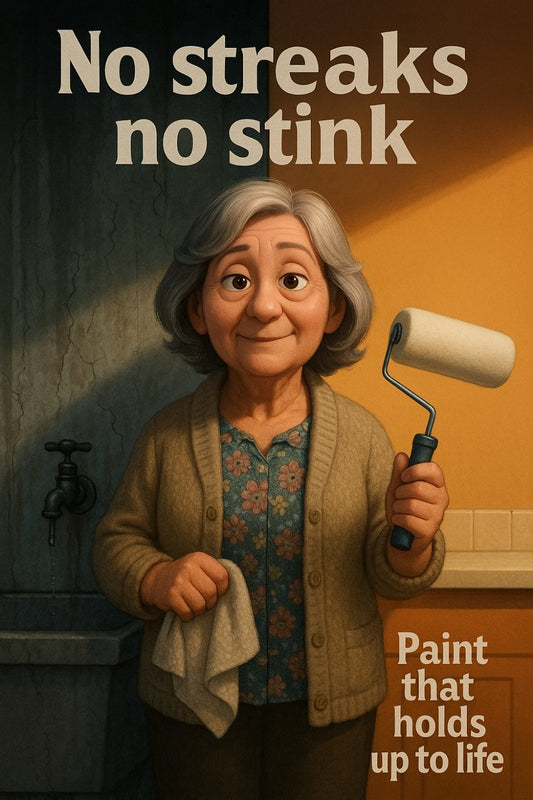
How to Create a Metal Faux Finish with Simple Techniques
Share
Bring the Beauty of Metal to Your Space with a Faux Finish
Love the sleek, industrial charm of metal but don’t want the hefty price tag or complicated installation? A metal faux finish is the perfect way to achieve that luxurious look using nothing more than paint and a few clever techniques. Whether you're adding an accent wall, revamping furniture, or giving décor a modern twist, this DIY project is surprisingly simple.
Why a Metal Faux Finish?
There’s something about metallics that instantly adds depth and sophistication to a space. A well-executed metal faux finish can mimic the look of aged copper, brushed steel, or even a distressed bronze – all without needing a welding torch or a construction crew. Perfect for homeowners who love getting their hands a little messy and enjoy the satisfaction of creating something stunning.
What You’ll Need
- Base paint: Choose a deep shade like black, charcoal, or deep brown, depending on the metal look you're going for.
- Metallic paint: Think silver, gold, bronze, copper, or pewter – whatever catches your eye.
- Glaze or clear topcoat: This helps bring out dimension and protects your finish.
- Sea sponge or dry brush: These create the subtle texture that mimics real metal.
- Rags or cheesecloth: For buffing and blending.
- Painter’s tape: To keep edges neat.
- Drop cloth: No one likes cleaning up unnecessary mess.
Step-by-Step Guide to a Stunning Finish
Step 1: Prep Your Surface
Make sure the surface is clean, dry, and free from dust. Lightly sand it if needed, so the paint grips well. Tape off any areas you don’t want painted.
Step 2: Apply the Base Coat
Using a brush or roller, cover the entire surface with your base colour. This will act as the foundation for the metallic effect. Let it dry completely before moving to the fun part.
Step 3: Add the Metallic Layer
Dip your sea sponge or dry brush into the metallic paint. Dab or drag it lightly over the base, allowing some of the darker shade to show through. The key here is layering—build up the depth gradually rather than covering everything at once.
Step 4: Blend It Out
Use a damp rag or cheesecloth to soften and blend the edges of your metallic layer. This gives a realistic, worn-in effect and prevents harsh lines.
Step 5: Seal for Longevity
Once you're happy with the look, apply a glaze or clear topcoat. This not only enhances the metallic effect but also protects your work from wear and tear.
Choosing the Right Metal Effect
- Brushed Steel: Stick with a black or charcoal base and layer silver over it for an industrial edge.
- Antique Copper: A deep brown base with copper metallic paint gives warmth and depth.
- Bronzed Elegance: Use a mix of gold and brown paint layers for an aged, sophisticated look.
Bonus Tips for a Pro Finish
- Less is more: Build up the metallic effect in layers rather than slapping it on.
- Use different tools: Experiment with sponges, brushes, or even crumpled paper towels to create varied textures.
- Practice first: Try your technique on a sample board before tackling furniture or walls.
Time to Get Painting!
This is the kind of project that lets creativity take the lead. With just a bit of paint and technique, you can turn a plain surface into something with texture and personality. Ready to give it a go? Grab your supplies and start layering—the perfect metal look is just a few brushstrokes away.
Happy painting!
Candeece

Stay Connected
Follow our Facebook Page: Strathalbyn H Hardware on Facebook



